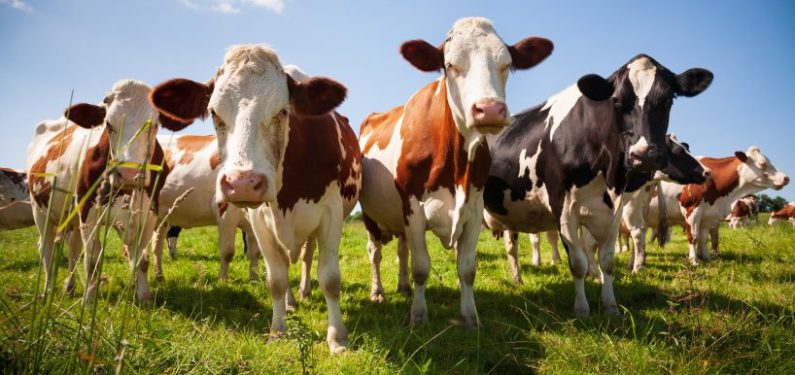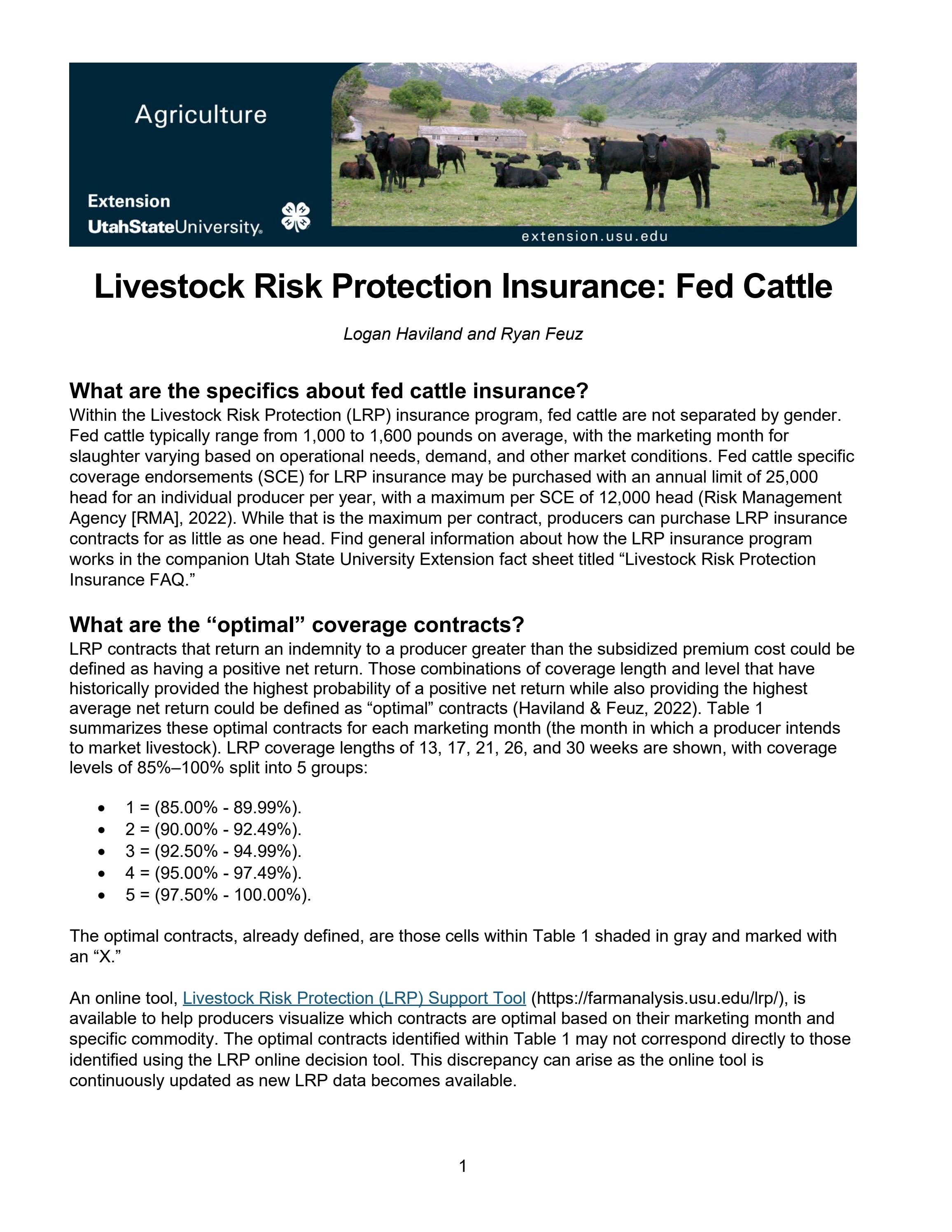Comprehending Livestock Danger Defense (LRP) Insurance: A Comprehensive Overview
Browsing the realm of livestock threat protection (LRP) insurance can be a complex venture for many in the farming market. From exactly how LRP insurance policy functions to the various coverage choices readily available, there is much to discover in this detailed guide that might potentially form the way livestock manufacturers approach risk management in their organizations.
Exactly How LRP Insurance Policy Functions
Occasionally, recognizing the technicians of Animals Risk Defense (LRP) insurance policy can be complex, however breaking down just how it works can give quality for breeders and farmers. LRP insurance coverage is a threat management tool developed to secure livestock producers versus unexpected rate decreases. The plan enables producers to set a protection level based on their details requirements, selecting the variety of head, weight variety, and protection rate. Once the policy remains in area, if market costs fall listed below the coverage cost, manufacturers can submit a claim for the distinction. It is essential to note that LRP insurance policy is not an income guarantee; instead, it focuses only on price danger protection. The coverage period normally ranges from 13 to 52 weeks, giving adaptability for producers to pick a period that lines up with their production cycle. By making use of LRP insurance policy, herdsmans and farmers can alleviate the financial risks related to rising and fall market rates, ensuring greater stability in their procedures.
Eligibility and Protection Options

When it comes to coverage alternatives, LRP insurance provides producers the flexibility to select the insurance coverage level, insurance coverage duration, and recommendations that ideal match their risk administration requirements. By comprehending the eligibility requirements and coverage choices offered, animals producers can make enlightened choices to manage risk properly.
Pros and Disadvantages of LRP Insurance
When examining Animals Risk Defense (LRP) insurance, it is crucial for livestock manufacturers to evaluate the disadvantages and advantages inherent in this risk management tool.

One of the primary advantages of LRP insurance is its capability to give protection versus a decline in livestock costs. In addition, LRP insurance offers a level of adaptability, enabling manufacturers to customize insurance coverage degrees and plan durations to match their particular demands.
One constraint of LRP insurance is that it does not secure against all types of threats, such as illness episodes or natural disasters. It is important for manufacturers to meticulously examine their individual risk direct exposure and monetary circumstance to establish if LRP insurance coverage is the right risk administration tool for their procedure.
Recognizing LRP Insurance Coverage Premiums

Tips for Making Best Use Of LRP Conveniences
Making the most of the benefits of Livestock Danger Protection (LRP) insurance policy calls for strategic preparation and aggressive risk management - Bagley Risk Management. To make the most of your LRP coverage, think about the complying with tips:
Regularly Assess Market Conditions: Keep informed regarding market fads and cost variations in the livestock market. By keeping track of these variables, you can make educated choices regarding when to buy LRP coverage to safeguard versus potential losses.
Set Realistic Coverage Degrees: When selecting protection degrees, consider your production expenses, market value of animals, and possible dangers - Bagley Risk Management. Establishing practical coverage Visit Your URL levels ensures that you are adequately shielded without paying too much for unneeded insurance coverage
Expand Your Coverage: As opposed to counting solely on LRP insurance policy, think about diversifying your threat administration approaches. Integrating LRP with other risk administration tools such as futures contracts or alternatives can supply extensive protection versus market uncertainties.
Review and Adjust check my reference Protection Frequently: As market problems transform, regularly assess your LRP protection to ensure it lines up with your present threat direct exposure. Readjusting coverage levels and timing of purchases can help enhance your risk defense technique. By complying with these pointers, you can optimize the benefits of LRP insurance policy and safeguard your livestock procedure against unanticipated dangers.
Conclusion
In conclusion, animals danger protection (LRP) insurance coverage is a beneficial tool for farmers to handle the economic risks connected with their animals procedures. By comprehending exactly how LRP works, qualification and coverage choices, as well as the benefits and drawbacks of this insurance, farmers can make informed choices to secure their source of incomes. By carefully thinking about LRP premiums and executing strategies to optimize benefits, farmers can alleviate potential losses and guarantee the sustainability of their procedures.
Livestock producers interested in acquiring Livestock Risk Defense (LRP) insurance policy can explore a variety of qualification standards and protection choices customized to their specific livestock operations.When it comes to coverage choices, LRP insurance coverage offers producers the flexibility to choose the insurance coverage degree, protection period, and endorsements that best suit their threat management needs.To understand the intricacies of Animals Danger Security (LRP) insurance policy fully, understanding the elements influencing LRP insurance costs is vital. LRP insurance coverage costs are established by numerous elements, consisting of the coverage degree chosen, the expected price of animals at the end of the insurance coverage period, the kind of animals being guaranteed, and the length of the insurance coverage period.Review and Adjust Insurance Coverage Regularly: As market problems change, periodically evaluate your LRP coverage to ensure it straightens with your existing threat direct exposure.